Lighting Glossary
While you can use a continuous lamp or a strobe on its own, to control the light it is producing you need to employ lighting modifiers. From softboxes that diffuse the light, through to spot attachments that create a hard, well-defined light-pool there are numerous accessories available to help you achieve your vision and knowing what effect these modifiers have plays a vital part in creative lighting. Many photographers will spend a considerable amount of time experimenting with various combinations to produce their idiosyncratic images, so the following glossary provides a rundown of the most commonly used lighting accessories in fashion photography. The vast majority of these will feature in the following chapters, where the theory of photographic lighting is shown in practice.
Barndoors
More closely associated with continuous lighting than strobes, barndoors consist of four adjustable flaps (“doors”) that can be used to regulate where the light falls. This allows you to restrict the light to a specific part of the subject or scene, or to prevent it spilling onto the camera’s lens and causing flare.

![]() Barndoors
Barndoors
Beauty dish
A beauty dish is a type of reflector dish specifically designed to create a soft light. The design of the reflector means that the light hits a flat, circular plate directly in front of the lamp, which bounces it back into the wide, shallow reflector bowl, and then out toward the subject. As the light is bounced twice before it reaches the subject (first from the reflective plate, and then from the reflector dish), it is diffused far more than using a standard reflector dish, creating a much softer light. Both white and silver beauty dishes are available, with a white reflector bowl creating a softer light.
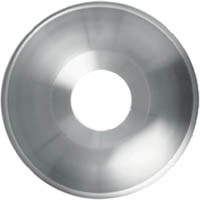
![]() Beauty dish
Beauty dish
Boom arm
If you want to have a lamp above your subject, without the light stand appearing in shot, then a boom arm is the answer. This simple pole attaches to the top of a sturdy stand, allowing the light to be positioned directly over a subject without encroaching into the shot.
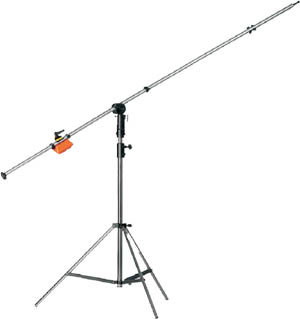
![]() Boom arm
Boom arm
Diffuser
A diffuser is a catch-all term used to describe any device that softens—or diffuses—the light. This could be a modifier attached to the lamp itself, such as a softbox or beauty dish, or it could be a semi-translucent sheet of fabric or a similar material that is positioned between the light source and the subject. The latter option is particularly useful if you’re shooting outdoors on a sunny day as the diffusion material will soften the harsh, direct sunlight and lighten the otherwise dark shadows.
Fill light
A secondary light in a lighting setup, typically used in addition to the key light to fill in shadows.
Flag
While barndoors are often used with continuous light sources, flags are commonly used with strobes. A flag can be anything from a small piece of card through to a large board and its job is simple: it is positioned in front of a light to prevent it from falling on a certain part of the set. Flags are often used to shield the camera’s lens from direct light that could cause flare, or to prevent a light aimed at the subject from spilling onto a background.
Flashmeter
A flashmeter is an essential tool for photographers using strobes, allowing you to take exposure readings from short-duration flashes. Look for a flashmeter that allows you to take incidental light readings, as well as reflected readings, so you can measure the light falling onto the subject for the most accurate measurement.

![]() Flashmeter
Flashmeter
Fresnel/Spot
A fresnel or spot—whether it’s a lamp in its own right, or a modifier that you attach to a light—produces a very small, controllable beam of light, making it ideal for picking out a detail or motif on an item of clothing or an accessory. Fresnels or spots often have a slot that allows them to be fitted with a gobo, allowing a sharply focused pattern to be projected onto the subject or background.

![]() Fresnel
Fresnel

![]() Spot
Spot
Gel
A gel (also sometimes known as an “acetate”) is a colored, translucent material, usually made of plastic, that’s positioned over the front of a lamp to change its color. This can be used for creative effect—to produce a red or green light, for example—or to change the color temperature of the light, converting a tungsten lamp to a daylight color temperature.
Gobo
Despite the apparent misspelling, gobo is an abbreviation of “go between.” It most commonly refers to a sheet of card or board that has had a pattern cut out of it and is positioned between the light and the subject—hence “go between.” Because of the cut-out pattern, the gobo creates distinct shadows, a classic example being the shadow of a window-frame cast onto a background to suggest light coming through a window that’s out of shot (even if the studio is windowless). Metal gobos are also used in spotlights, where the light can be focused to create a hard edge to the shadows.
Grid
A grid is a disc made up of a honeycomb-like structure that fits onto the front of a reflector dish to channel the light and minimize its spread. The deeper or more densely packed the honeycomb, the greater the channeling effect, which helps concentrate the light on a specific part of the image.
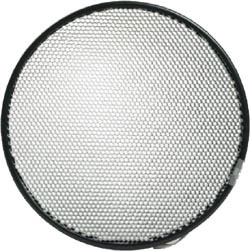
![]() Grid
Grid
Key light
The primary light in a lighting setup, the key light is typically brighter than the rest and provides the main illumination for the subject.
Light stand
Often overlooked, light stands come in a wide range of sizes and for greater flexibility it’s good to have several different types. A floor stand that can support a light at ground level is ideal if you want to create a graduated effect on a plain backdrop in the studio—simply attach your light and aim it upward at the backdrop. Likewise, a heavyweight stand that will allow you to position a light over ten feet (3m) off the ground will also allow you to explore more creative options.

![]() Light stand
Light stand
Octabox
A variation of the traditional softbox, an octabox—as its name suggests—has eight sides instead of four. Although this makes very little difference to the diffusion of the light, it has a very significant effect on the model. Instead of square or rectangular catchlights in the subject’s eyes it creates a rounder, more natural-looking catchlight.
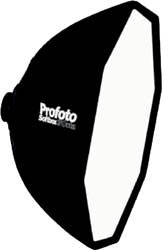
![]() Octabox
Octabox
Radio slave
A radio slave is used to trigger a flash wirelessly, even if it isn’t in direct view of the camera. A transmitter is fitted to the camera (usually in the hotshoe) and a receiver attached to the flash. When the camera fires, the transmitter sends a signal that triggers the flash. Multiple receivers can be used to fire multiple strobes at the same time, and an increasing number of studio strobes and packs now have radio slaves built in.
Reflector
A reflector is anything that is used to reflect light onto the subject, usually to lighten the shadows created by a direct light. The most common reflectors used are: white, which provides a soft light; silver, which creates a slightly harder reflection; and gold, which has a warming effect. However, any colored material will reflect light, while mirrors can also be used if you want the reflected light to be hard and crisp.

![]() Wide reflector
Wide reflector
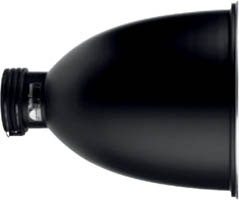
![]() Shallow reflector
Shallow reflector
Reflector dish
Reflector dishes come in a wide range of sizes, and each has its own unique characteristics. At its most basic, a reflector dish operates as little more than a “spill-kill,” preventing stray light from spilling out of the side of a lamp and potentially causing lens flare. Deeper and narrower dishes are designed to concentrate the light a little more (often in combination with a grid), while shallower and wider dishes allow the light to flood a scene.
Slave cell
A slave cell is an optical device used to trigger a flash without connecting it to a camera. The slave is plugged into a strobe and fires the flash the moment it detects another flash firing. In this way, multiple strobes can be fired at the same time, just so long as one is attached to the camera and the rest are fitted with slaves. Most studio strobes have built-in slave cells, with an increasing number now being equipped with radio slaves.
Snoot
This conical attachment restricts the spread of light from a strobe to create a distinctly narrow light-pool that’s ideal for lighting a small area in a shot.

![]() Snoot
Snoot
Softbox
A staple in studio photography, a softbox allows a light to be aimed directly at the subject (to maximize the output), while simultaneously spreading it over a wide area and through a diffuser to soften it. Softboxes are available in a wide range of sizes and the larger and deeper the softbox, the softer the light. In addition to the diffuser on the front of the softbox, removable internal diffusers (“baffles”) provide another level of light softening, as does the choice between a white interior (softer) and a silver one (harder).

![]() Softbox
Softbox
Striplight
A long, thin light that is available as a dedicated strobe, a fluorescent lamp similar to a domestic striplight, or as a softbox variant. The light can be used vertically to create a very narrow, but tall, light pattern, or horizontally above or below a model to create an equally narrow “wall” of light.
Umbrella
There are two types of umbrella: those that reflect light, and those that allow a light to be fired through them. Like a reflector, a reflective umbrella bounces light onto the subject, diffusing it as it does so. White umbrellas produce the softest light, silver umbrellas a harder, more powerful light, and gold umbrellas deliver subtle warmth to an image. Shoot-through umbrellas are used over a light that is aimed directly at the subject, with the semi-translucent material used in their construction diffusing the light in a similar fashion to a (crude) softbox.
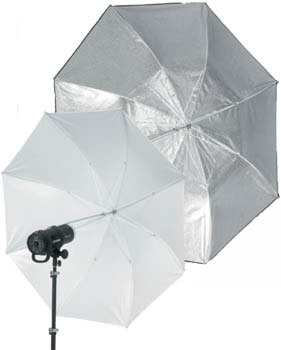
![]() White and silver umbrellas
White and silver umbrellas
How to use this book
In the following chapters of this book we’re going to take a look at a collection of stunning fashion images, and get a behind-the-scenes insight into how and why they were created. To help you visualize how each shot was lit, they are all accompanied by a pair of 3D illustrations—both an overhead “plan” view and a perspective view—that give you an idea of the lighting used and its position. In addition, you’ll find useful tips on creating a similar look for yourself, whether it’s through the use of lighting, digital retouching, or simply a way of imbuing a photograph with a specific look or “feel.”
It’s worth noting that while the power, make, and even model of the lights used is often listed, this shouldn’t be considered the only lighting that can be used. In most cases, a lower- or higher- powered lamp would create a very similar result, and a strobe could quite easily be replaced with a continuous light source, or vice versa. More importantly, these lighting setups should in no way be considered as a definitive collection of “blueprints” for successful fashion shots—such a thing just doesn’t exist. Sure, you can try recreating a similar effect yourself, but also think about how you could take it a step further by adding your own creative twist.
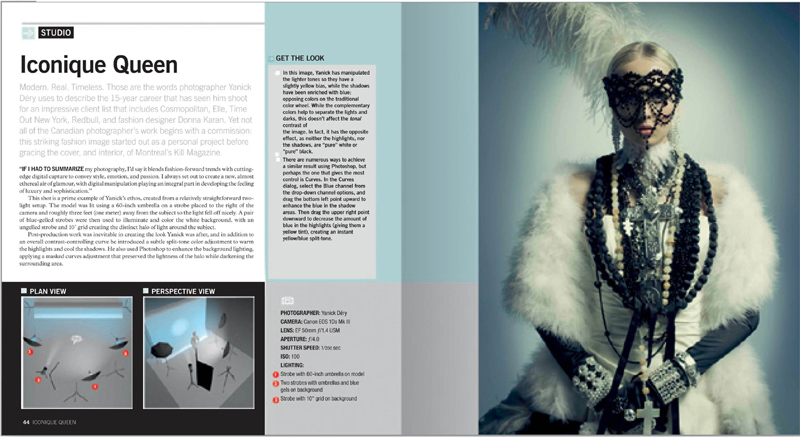
 KEY TO 3D ILLUSTRATIONS
KEY TO 3D ILLUSTRATIONS
![]() In the following chapters images are accompanied by 3D illustrations to support the lighting setups used. Below is a collection of visual icons that appear in the 3D illustrations for easy reference and understanding.
In the following chapters images are accompanied by 3D illustrations to support the lighting setups used. Below is a collection of visual icons that appear in the 3D illustrations for easy reference and understanding.
|
|
|
|
|
Model |
|
|
Camera |
|
|
Redhead |
|
|
HMI |
|
|
Strobe snoop |
|
|
Strobe reflector |
|
|
Large softbox |
|
|
Small softbox |
|
|
Umbrella |
|
|
Barndoors |
|
|
Beauty dish |
|
|
Spot |
|
|
Hotshoe flash on stand |
|
|
Hotshoe shoot through |
|
|
Hotshoe flash softbox |
|
|
White reflector |
|
|
Black flag |
|
|
Octabox |
|
|
Striplight |






































